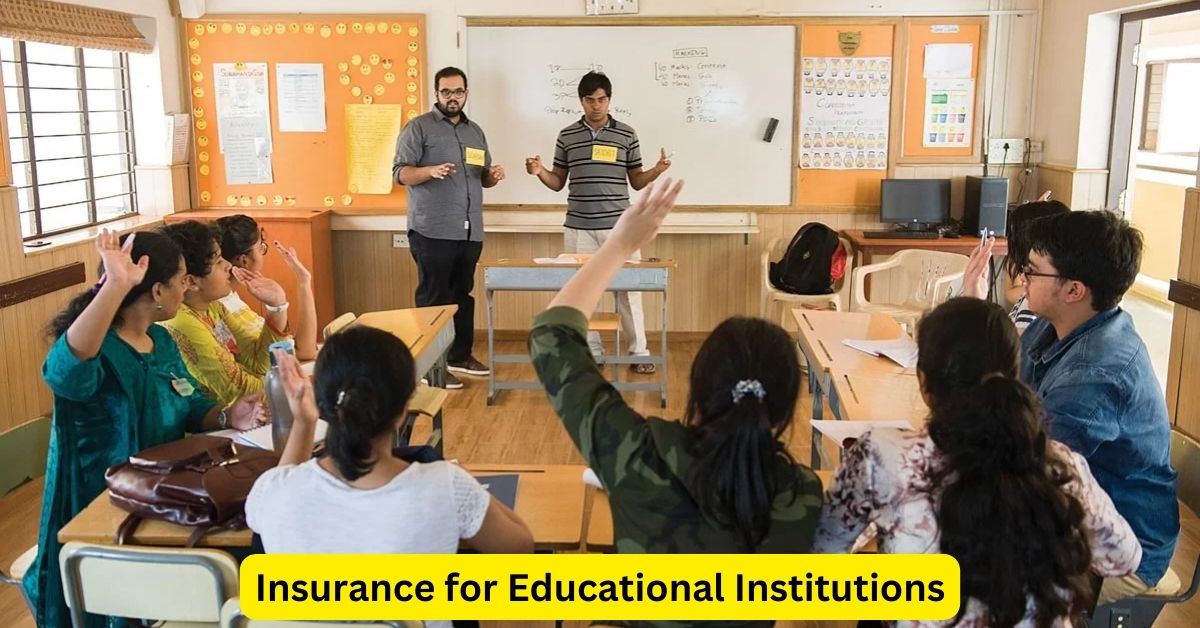Educational institutions, from elementary schools to universities, play a fundamental role in shaping the future of students and communities. However, operating educational facilities comes with a range of risks, including property damage, liability claims, and regulatory compliance issues. Insurance for educational institutions is essential for managing these risks and ensuring the smooth operation of schools and universities. This article explores the importance of insurance for educational institutions and highlights key types of coverage necessary for protecting against common challenges in the education sector.
Why Insurance is Crucial for Educational Institutions
Educational institutions face various risks that can impact their operations, finances, and reputation. Insurance provides a safety net to address these risks and ensure that institutions can continue to deliver quality education. Here’s why insurance is essential for schools and universities:
**1. Protection Against Liability Claims: Educational institutions are at risk of liability claims related to accidents, injuries, or allegations of negligence. Liability insurance covers legal fees, settlements, and judgments arising from such claims, protecting the institution from potentially costly lawsuits.
**2. Coverage for Property Damage: Schools and universities invest significantly in property, including buildings, classrooms, and equipment. Insurance protects against damage or loss due to events like fires, vandalism, or natural disasters, ensuring that essential infrastructure can be repaired or replaced.
**3. Financial Stability: The cost of managing risks and responding to incidents can be substantial. Insurance helps institutions maintain financial stability by covering expenses related to claims, property damage, and business interruptions, allowing them to focus on their educational mission.
**4. Regulatory Compliance: Educational institutions are subject to various regulations and standards. Insurance helps institutions meet regulatory requirements and manage the financial impact of compliance-related issues or audits.
Key Types of Insurance for Educational Institutions
To effectively manage risks and protect their operations, educational institutions should consider the following types of insurance coverage:
**1. General Liability Insurance: General liability insurance covers claims of bodily injury, property damage, or personal injury that may occur on school premises or during school activities. This includes coverage for incidents such as slip-and-fall accidents or injuries during extracurricular activities.
**2. Property Insurance: Property insurance protects against damage to school buildings, equipment, and other physical assets caused by events like fires, theft, or natural disasters. This coverage ensures that damaged or lost property can be repaired or replaced.
**3. Professional Liability Insurance: Also known as educators’ liability insurance, this coverage protects against claims of negligence or errors in the delivery of educational services. It covers legal costs and damages related to allegations of inadequate teaching or failure to meet educational standards.
**4. Workers’ Compensation Insurance: Workers’ compensation insurance covers medical expenses and lost wages for employees who are injured or become ill while performing their job duties. It is essential for protecting school staff and complying with workplace safety regulations.
**5. Student Accident Insurance: Student accident insurance provides coverage for injuries sustained by students during school activities, both on and off-campus. This insurance helps cover medical expenses and provides financial support in case of severe injuries.
**6. Cyber Liability Insurance: With increasing reliance on digital systems and online learning platforms, cyber liability insurance protects against data breaches, cyberattacks, and other digital threats. It covers expenses related to data recovery, legal liabilities, and regulatory fines.
Conclusion
In conclusion, insurance is a critical aspect of risk management for educational institutions. By securing the appropriate coverage, schools and universities can protect themselves against liability claims, property damage, and other operational risks. As the education sector continues to evolve and face new challenges, comprehensive insurance remains essential for ensuring the safety, stability, and continuity of educational environments.

